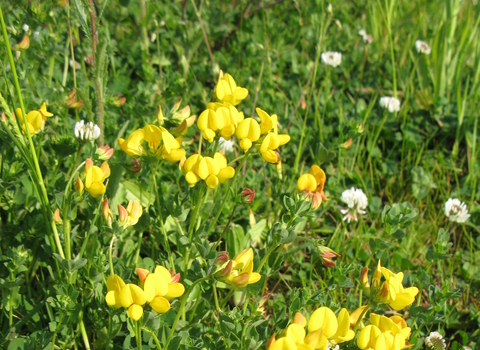Bird's-foot-trefoil ©Philip Precey

©Lee Schofield
Common bird's-foot-trefoil
Common bird's-foot-trefoil has a vareity of names that conjure up some interesting images: 'Eggs and Bacon', for instance! Its small, yellow, slipper-like flowers can be seen in all kinds of grassy places.
Scientific name
Lotus corniculatusWhen to see
May to SeptemberSpecies information
Category
Statistics
Height: up to 35cmCommon.
